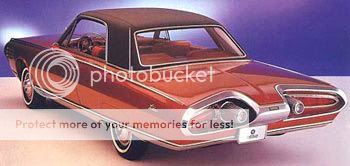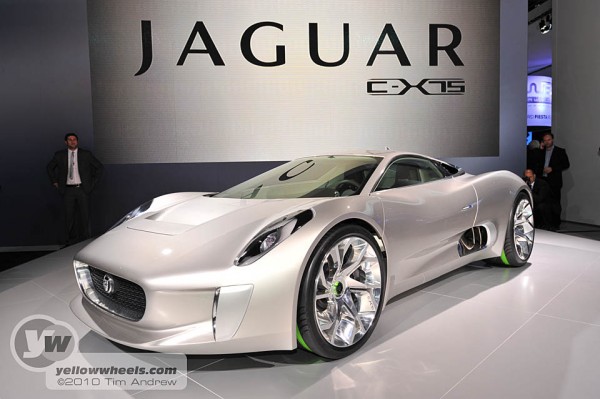Al Bhatti
SENIOR MEMBER

- Joined
- Nov 16, 2009
- Messages
- 5,686
- Reaction score
- 6
- Country
- Location
Jan 20, 2012
Chrysler's turbine experiment could have changed the car industry
Many assume that developing alternative fuel sources for cars is a relatively new phenomenon, that manufacturers were forced to experiment when depleted fossil fuel reserves and climate change became hotly debated topical issues. But innovation and engineering challenges have always been at the heart of automobile design. Back in the 1930s when climate change was still in the realm of science fiction, Chrysler began development of a turbine engine. Unlike a petrol car, a turbine could run on more or less anything combustible including kerosene and vegetable oil. This versatility was demonstrated by the president of Mexico, who famously ran his model on tequila.
This government-supported programme ran for more than 30 years, producing one of the most intriguing and ingenious prototypes of the 1960s before it was mysteriously stopped when it was on the cusp of revolutionising modern motoring.
In the lead-up to the Second World War Chrysler began to explore the feasibility of powering a car by turbine. The objective was to develop a durable and reliable powerplant that would last longer and be far easier to maintain than a conventional petrol engine. With only 60 moving parts, there was less to go wrong and with vibration-free running, a turbine promised a much longer shelf-life.
The first breakthrough came in the late 1940s when a turboprop engine was successfully developed for the US navy. This proved its viability and encouraged the company to accelerate its development for a car. In 1954 Chrysler tested the first-generation prototype but, though it proved reliable, there were two significant problems. Firstly, it was far less economical than a conventional car and, secondly, its exhaust gases were emitted at a scorching 650°C, which was bad news for the car behind in a traffic jam or indeed any cat seeking to make its way across the road.
Chrysler worked on these problems and, by the early 1960s, the company was confident enough in the technology to develop an exclusive "turbine" model. Unlike modern eco models, which tend to be small, the turbine was a sleek, elegant and luxurious two-door coupé. Its eye-catching style was reminiscent of the first-generation Batmobile, with distinctive conical chrome covers for the tail lights and turbine-themed detail on the hubcaps and centre console. The turbine generated 130hp and could go from 0 to 100kph in 12 seconds.
The flaws of earlier designs had largely been overcome. Economy was much improved and comparable with a petrol model of equivalent performance. This was achieved through a regenerator that extracted heat from the exhaust gasses and transferred it back to the compressed air in the turbine. This also solved the public safety issue of the scorching exhaust. Other issues such as throttle lag had also been addressed.
Chrysler built 55 turbine models, most of which were leant to the public for extensive trials. The company received 30,000 requests from intrigued people, from which around 200 were selected. In total, more than one million miles were clocked up, with drivers reporting that the cars were reliable and glided quietly even at high speeds. Some drivers said it took a while to get used to the noise of a giant vacuum cleaner rather than the familiar rumble of a V8 but, nevertheless, a large proportion were so impressed that they predicted turbine cars would replace their petrol cousins in the near future.
Sadly, only a handful of turbines remain as most, as was the convention with prototypes, were scrapped after the trials. Some can still be seen in museums in the USA and one is now owned by chat show host Jay Leno.
Chrysler continued to develop the technology, achieving greater economy and complying with new nitrogen emission regulations. By the early 1970s it was set to put a turbine car into full production. However, the company was in debt and, as a condition of its bailout loan, the US government demanded that the turbine programme be terminated. It is not known why it was so opposed, particularly as it had provided considerable funding over previous decades.
One theory is that they came under pressure from oil companies seeking to protect one of their key markets. But whatever the reason, their stance consigned the turbine car to a footnote in motoring history. Perhaps if a crystal ball was present, the government would have acted differently, and we'd all be filling up with cooking oil rather than petroleum. But as a postscript, the programme did have one last success, as a turbine tank was developed in the late 1970s.
Chrysler's turbine experiment could have changed the car industry - The National
Chrysler's turbine experiment could have changed the car industry
Many assume that developing alternative fuel sources for cars is a relatively new phenomenon, that manufacturers were forced to experiment when depleted fossil fuel reserves and climate change became hotly debated topical issues. But innovation and engineering challenges have always been at the heart of automobile design. Back in the 1930s when climate change was still in the realm of science fiction, Chrysler began development of a turbine engine. Unlike a petrol car, a turbine could run on more or less anything combustible including kerosene and vegetable oil. This versatility was demonstrated by the president of Mexico, who famously ran his model on tequila.
This government-supported programme ran for more than 30 years, producing one of the most intriguing and ingenious prototypes of the 1960s before it was mysteriously stopped when it was on the cusp of revolutionising modern motoring.
In the lead-up to the Second World War Chrysler began to explore the feasibility of powering a car by turbine. The objective was to develop a durable and reliable powerplant that would last longer and be far easier to maintain than a conventional petrol engine. With only 60 moving parts, there was less to go wrong and with vibration-free running, a turbine promised a much longer shelf-life.
The first breakthrough came in the late 1940s when a turboprop engine was successfully developed for the US navy. This proved its viability and encouraged the company to accelerate its development for a car. In 1954 Chrysler tested the first-generation prototype but, though it proved reliable, there were two significant problems. Firstly, it was far less economical than a conventional car and, secondly, its exhaust gases were emitted at a scorching 650°C, which was bad news for the car behind in a traffic jam or indeed any cat seeking to make its way across the road.
Chrysler worked on these problems and, by the early 1960s, the company was confident enough in the technology to develop an exclusive "turbine" model. Unlike modern eco models, which tend to be small, the turbine was a sleek, elegant and luxurious two-door coupé. Its eye-catching style was reminiscent of the first-generation Batmobile, with distinctive conical chrome covers for the tail lights and turbine-themed detail on the hubcaps and centre console. The turbine generated 130hp and could go from 0 to 100kph in 12 seconds.
The flaws of earlier designs had largely been overcome. Economy was much improved and comparable with a petrol model of equivalent performance. This was achieved through a regenerator that extracted heat from the exhaust gasses and transferred it back to the compressed air in the turbine. This also solved the public safety issue of the scorching exhaust. Other issues such as throttle lag had also been addressed.
Chrysler built 55 turbine models, most of which were leant to the public for extensive trials. The company received 30,000 requests from intrigued people, from which around 200 were selected. In total, more than one million miles were clocked up, with drivers reporting that the cars were reliable and glided quietly even at high speeds. Some drivers said it took a while to get used to the noise of a giant vacuum cleaner rather than the familiar rumble of a V8 but, nevertheless, a large proportion were so impressed that they predicted turbine cars would replace their petrol cousins in the near future.
Sadly, only a handful of turbines remain as most, as was the convention with prototypes, were scrapped after the trials. Some can still be seen in museums in the USA and one is now owned by chat show host Jay Leno.
Chrysler continued to develop the technology, achieving greater economy and complying with new nitrogen emission regulations. By the early 1970s it was set to put a turbine car into full production. However, the company was in debt and, as a condition of its bailout loan, the US government demanded that the turbine programme be terminated. It is not known why it was so opposed, particularly as it had provided considerable funding over previous decades.
One theory is that they came under pressure from oil companies seeking to protect one of their key markets. But whatever the reason, their stance consigned the turbine car to a footnote in motoring history. Perhaps if a crystal ball was present, the government would have acted differently, and we'd all be filling up with cooking oil rather than petroleum. But as a postscript, the programme did have one last success, as a turbine tank was developed in the late 1970s.
Chrysler's turbine experiment could have changed the car industry - The National













